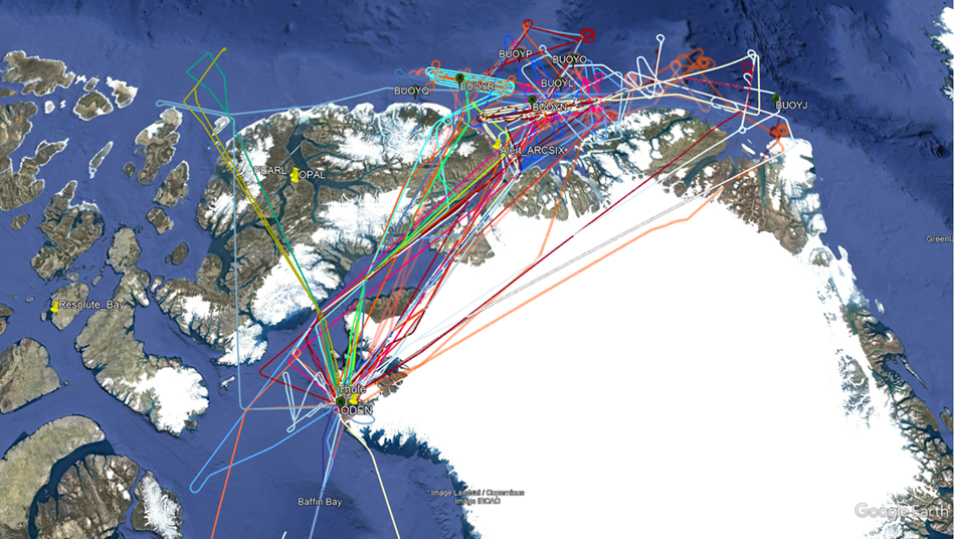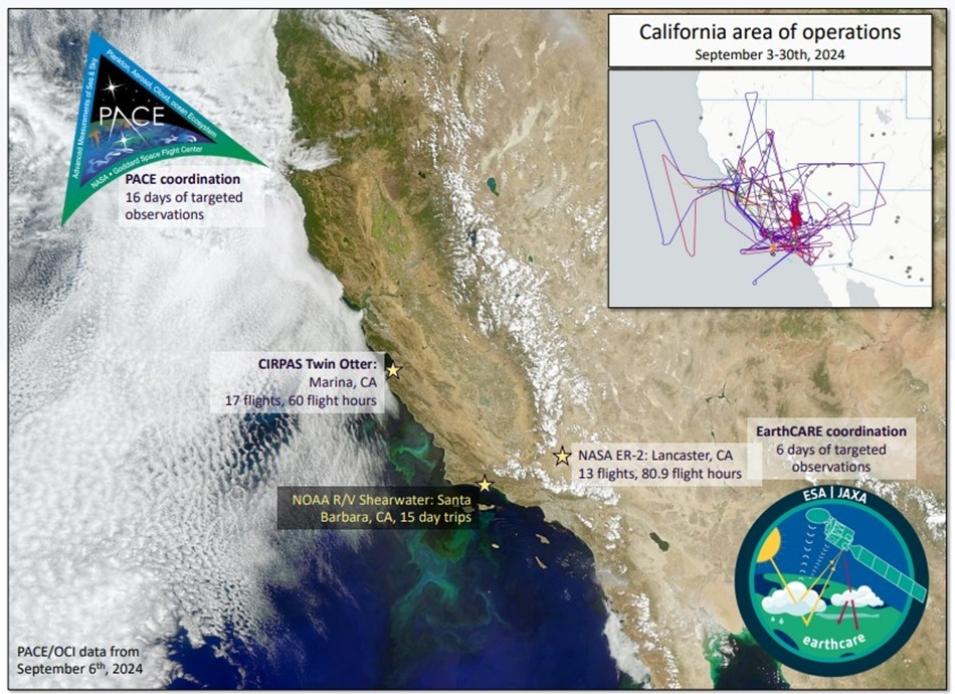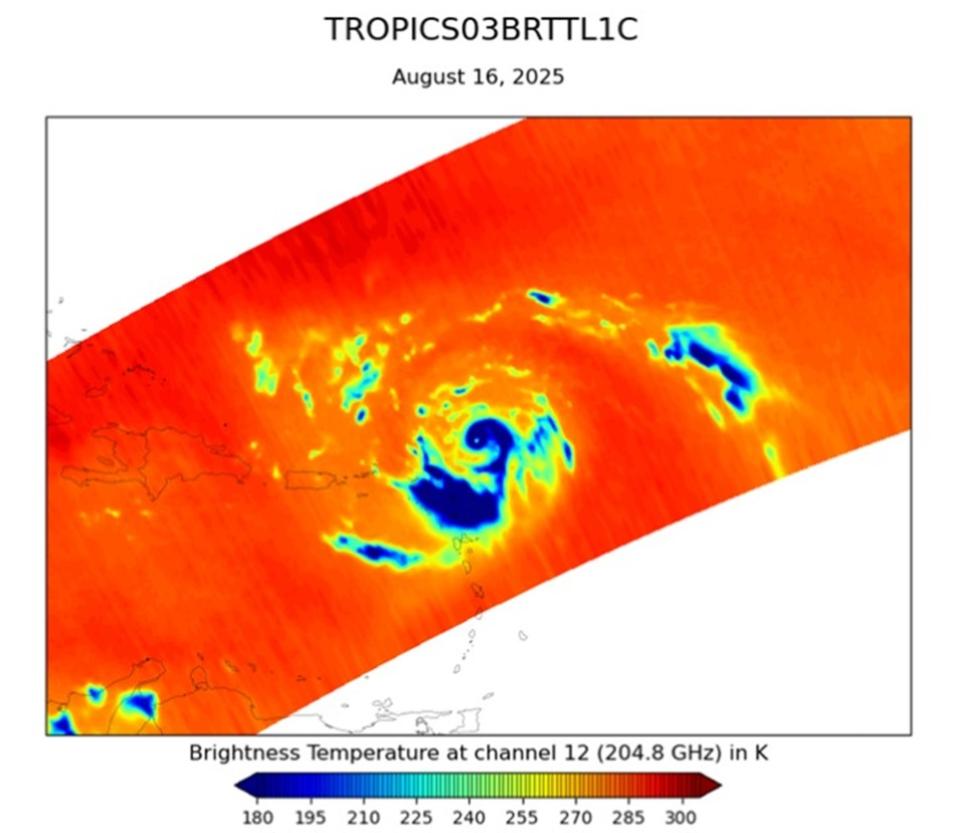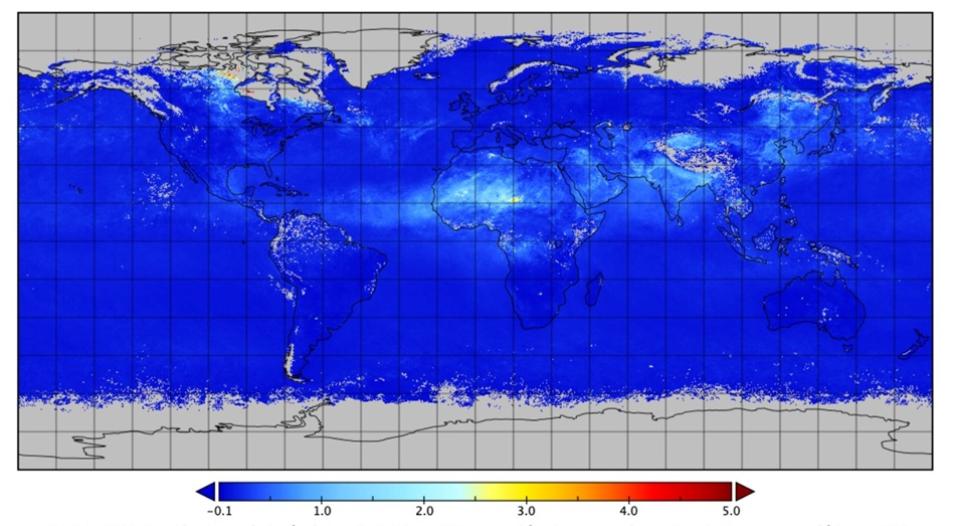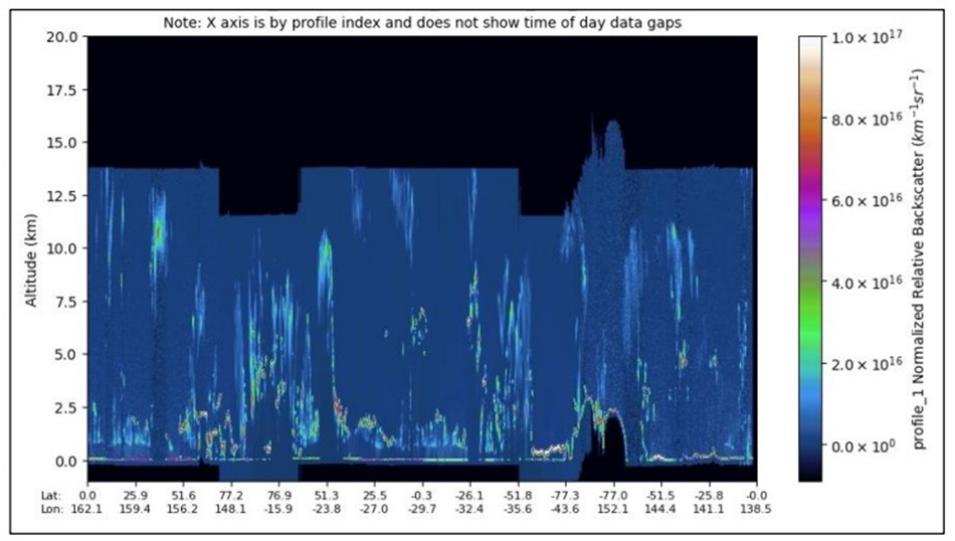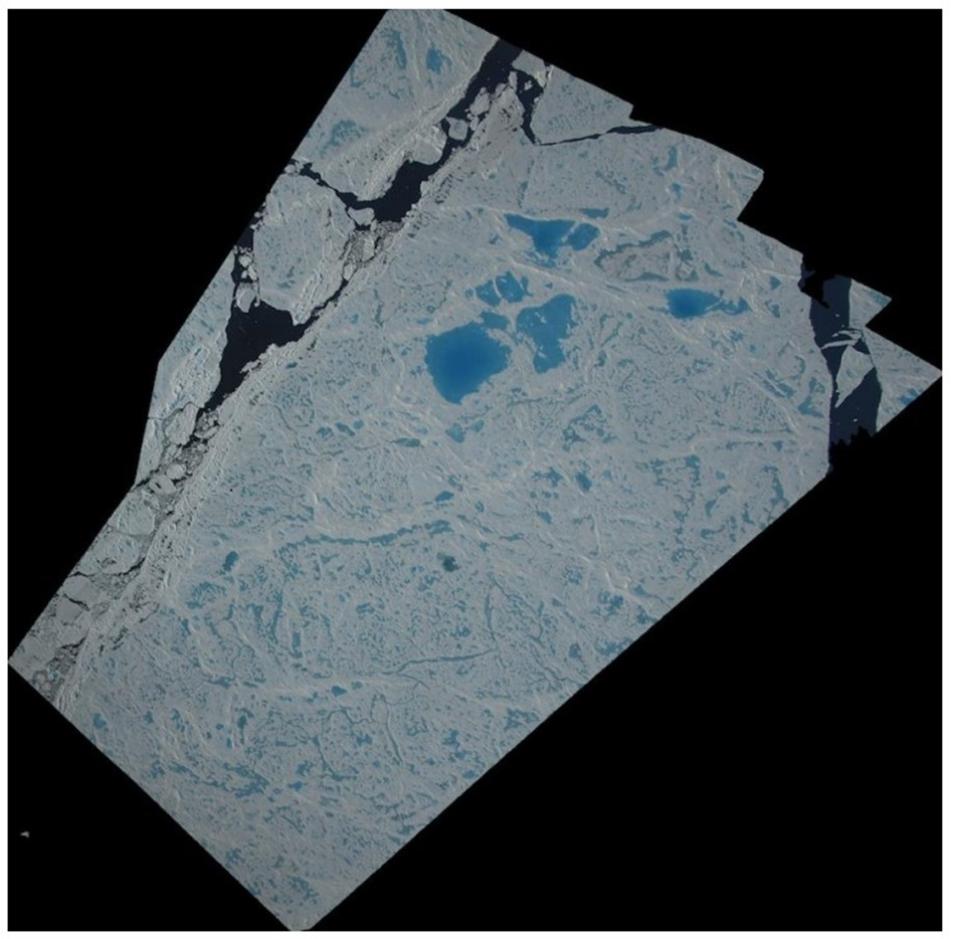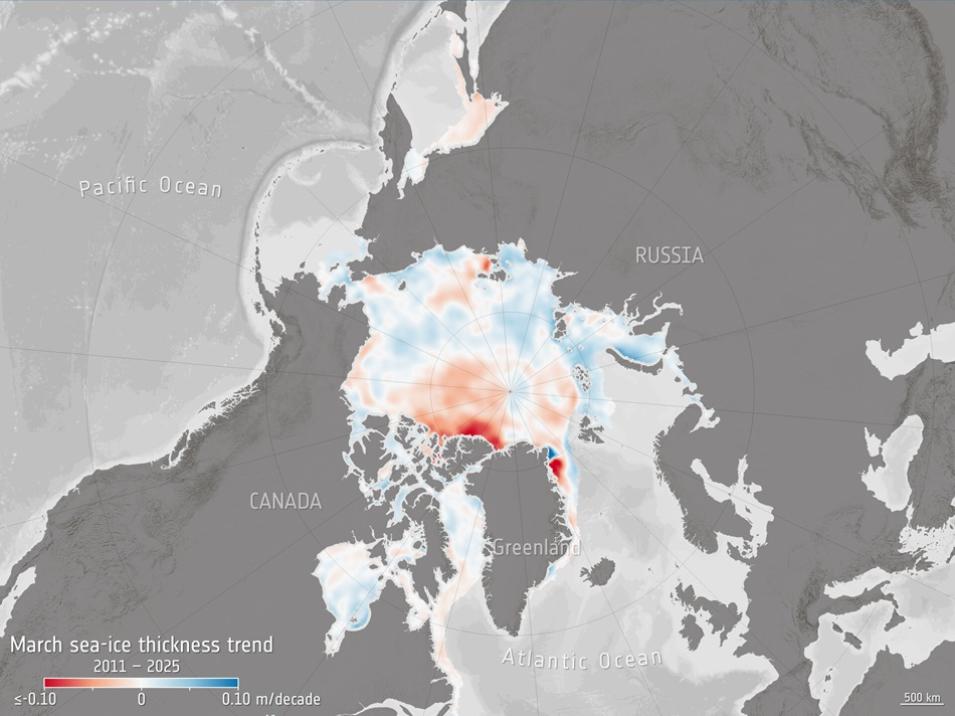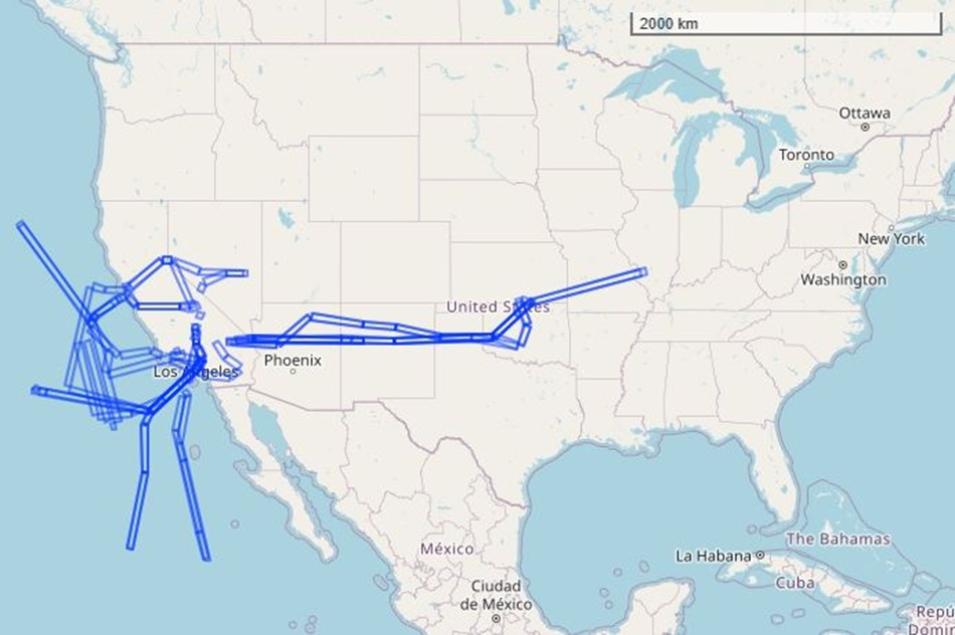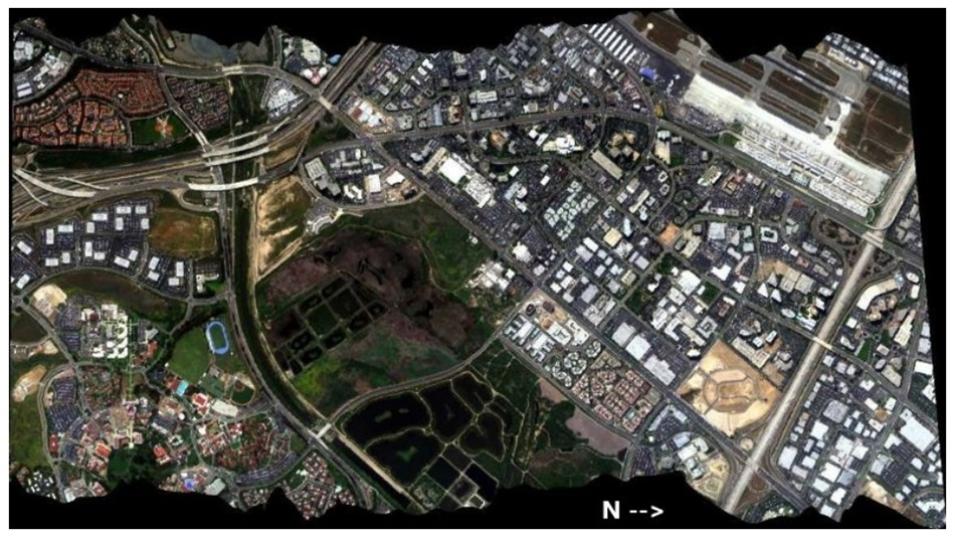SnowEx23 GIS References and Field Maps, Version 1 Dataset Now Available
The SnowEx23 GIS References and Field Maps, Version 1 dataset is now available from NSIDC DAAC. This dataset contains geolocation information for ground-based and airborne measurements collected in Alaska as part of the NASA SnowEx 2023 campaign. Temporal coverage spans from October 25, 2021, to November 30, 2023.
Access SnowEx23 GIS References and Field Maps, Version 1 data and more information.
SnowEx23 March 23 Intensive Observation Period (IOP) Snow Depth Profiles, Version 1 Dataset Released
NSIDC DAAC released the SnowEx23 Mar23 IOP Snow Depth Profiles, Version 1 dataset. This dataset contains snow depth profiles measured as part of the NASA SnowEx23 March 2023 Intensive Observation Period. Ground-based snow depth profile measurements were taken in the vicinity of 170 snow pits distributed across five study areas in Northern Alaska. Temporal coverage spans from March 7 to 16, 2023.
Access SnowEx23 March 23 IOP Snow Depth Profiles, Version 1 data and more information.
New NASA Earthdata Cloud Access Option for SMAP NRT Collection Now Available
NSIDC DAAC announced that the near real-time (NRT) Soil Moisture Active Passive (SMAP) Level 1B Radiometer Half-Orbit Time-Ordered Brightness Temperatures, Version 105, and the Near Real-time SMAP Level 2 Radiometer Half-Orbit 36 Kilometer EASE-Grid Soil Moisture, Version 107 datasets are now available in the NASA Earthdata Cloud.
These datasets will be available in the legacy HTTPS File System until October 28, 2025. Users who rely on this archive are encouraged to update direct download workflows and scripts to use the new Earthdata Cloud access URLs. The legacy HTTPS File System URL on the dataset landing page has been replaced with the Earthdata Cloud HTTPS File System URL. However, users can still find the legacy HTTPS URL in our Programmatic Data Access Guide.
The NSIDC DAAC User Services Office provides support for direct data download from the Earthdata Cloud HTTPS and basic access to our AWS Simple Storage Service (S3) buckets. For more details on these access options, see the Earthdata Cloud data Access Guide.
Learn more about the Earthdata Cloud access option for SMAP NRT data.
AMSR2 Daily Polar Gridded Sea Ice Concentrations and AMSR2 Daily Polar Gridded Brightness Temperature Datasets Updated
NSIDC DAAC announced that the Advanced Microwave Scanning Radiometer 2 (AMSR2) Daily Polar Gridded Sea Ice Concentrations and AMSR2 Daily Polar Gridded Brightness Temperatures datasets have been updated to Version 2. This update includes a format change from binary to netCDF, resolves the previous pole hole mask issue, and adds the 37H channel. Version 1 data products will be retired on September 29, 2025.
Access AMSR2 data and more information.
Near Real-Time AMSR2 EASE-Grid Daily Global Ice Concentration and Snow Extent, Version 1 Dataset Now Available
The Near Real-Time AMSR2 EASE-Grid Daily Global Ice Concentration and Snow Extent, Version 1 (NISE_A2) is now available from NSIDC DAAC. NISE_A2 is intended to be the replacement dataset for the Near Real-Time Special Sensor Microwave Imager (SSM/I)/Special Sensor Microwave Imager/Sounder (SSMIS) EASE-Grid Daily Global Ice Concentration and Snow Extent, Version 5 (NISE) data product. This new dataset contains the same fields as the NISE product, with AMSR2 input data replacing SSMIS. The data are provided in the 25-kilometer Northern Hemisphere and Southern Hemisphere Equal-Area Scalable Earth Grids (EASE-Grid).
Access NRT AMSR2 EASE-Grid Daily Global Ice Concentration and Snow Extent, Version 1 data and more information.
High Mountain Asia Supraglacial Lake Extents on Debris Covered Glaciers, 1988-2023, Version 1 Dataset Released
NSIDC DAAC released the High Mountain Asia Supraglacial Lake Extents on Debris Covered Glaciers, 1988-2023, Version 1 dataset. This dataset identifies the extent of supraglacial lakes (SGLs) from 1988 through 2023 on 769 of the largest debris-covered glaciers in the High Mountain Asia region. SGLs were generated via automated processing of 30-meter Landsat imagery and are provided at 1-year intervals from 2004 to 2023, at 2-year intervals from 1992 to 2003, and as a single 4-year interval from 1988 to 1991.
Access High Mountain Asia SGL Extents on Debris Covered Glaciers data and more information.
NSIDC DAAC to Retire Legacy Datasets
NSIDC DAAC announced it is retiring the following legacy datasets:
The NASA Earthdata Cloud is now the primary data archive for the data. Users accessing data through the legacy, on-premises archive, including through the HTTPS File System or through the Earthdata Search Stage for Delivery (ECHO Orders) option, should update their data access workflows and scripts to use the Earthdata Cloud archive.
Access the NASA Earthdata Cloud NISE_A2 archive.
The NSIDC DAAC User Services Office provides support for direct data download from Earthdata Cloud HTTPS and access to our AWS Simple Storage Service (S3) buckets. View more details on these access options.
Final IceBridge Datasets Added to NASA Earthdata Cloud
NSIDC DAAC has added four IceBridge datasets to NASA Earthdata Cloud, thereby completing the migration of all IceBridge collections to the cloud platform. The added datasets include:
- IceBridge Digital Mapping Sensor (DMS) Level 3 Ames Stereo Pipeline Orthorectified Images, Version 1
- IceBridge DMS Level 3 Ames Stereo Pipeline Photogrammetric DEM, Version 1
- IceBridge Land, Vegetation, and Ice Sensor (LVIS) Level 0 Raw Ranges, Version 1
- IceBridge DMS L1B Geolocated and Orthorectified Images, Version 1
While these datasets will continue to be available via their current URLs and workflows, these legacy access methods will be retired soon. Users are encouraged to update their direct download workflows, including any data download scripts, to use the new Earthdata Cloud HTTPS location.
Access the IceBridge datasets and more information.
